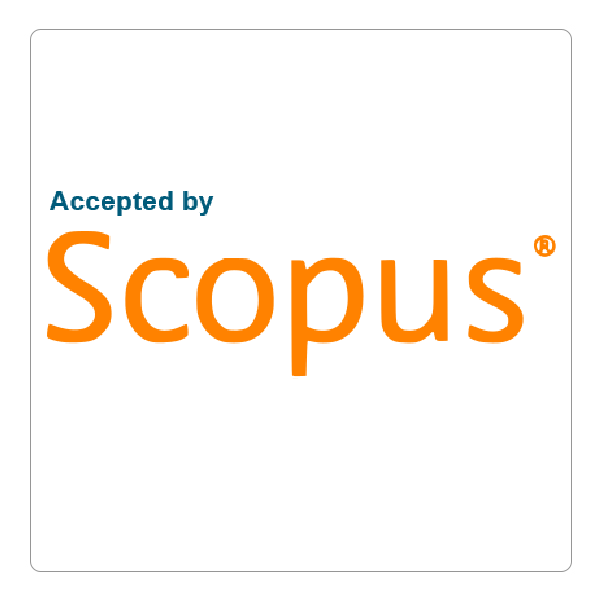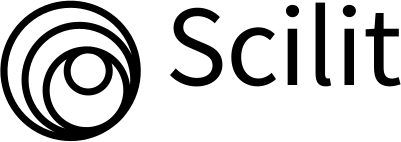How to Cite This Article
AbdullaGoran, Siraj Muhammed
(2017)
"Determination of Heavy Trace Metals in Tissues of Three Fish Species and Two Gull Species from Derbendikhan Lake, Kurdistan Region of Iraq,"
Polytechnic Journal: Vol. 7:
Iss.
1, Article 1.
DOI: https://doi.org/10.59341/2707-7799.1748
Document Type
Original Article
Abstract
Heavy trace metals such as arsenic, cobalt, chromium, nickel, cadmium, mercury, selenium and lead, in addition to some micronutrients such as manganese, copper, iron and zinc were analyzed in water, sediment, and tissues of three edible fishes (Capoeta trutta, Arabibarbus grypus, Cyprinus carpio) and two gull species (Chroicocephalus genei and Larus michahellis) from Derbendikhan Lake in Sulaymaniyah governorate, Kurdistan region of Iraq during winter, spring and summer seasons. The content of heavy metals in the fish species differed depending on the season, feeding status and sediment quality which in turn biomagnified in gull tissues. The indices of bioaccumulation factors from water and sediment (BAFw and BAFs), bioconcentration factor (BCF), biogeochemical index (I-geo) and pollution load index (PLI) between concentrations of selected heavy metals in fish tissues, bird organs, sediments and water indicated that there is direct accumulation of metals from the water and sediment to the fish and then to the higher trophic level. Seasonal variations of heavy metal levels in water and sediment samples indicated high levels during spring season; however, fish tissues indicated elevated concentrations during the dry season. Sediment results for heavy metals were higher than that in water and tissues of gull and fish species. Correlation coefficient (P < 0.05) were found between heavy metals in sediment, fish, water and bird. The current study assumes that various metals were present in the fish tissues at different levels, but these exceeded maximum levels permitted by WHO/FAO particularly for lead, mercury and zinc; thus, the fish from these areas are generally unsafe for human consumption.
Publication Date
3-1-2017
References
Abelkop, A.D.K., Graham, J.D., Royer, T.V. (2016). Persistent, Bioaccumulative, and Toxic (PBT) Chemicals, Technical Aspects, Policies, and Practices. CRC PressTaylor & Francis Group. 267pp.
Adam, S.M. (2002). Biological indicators of aquatic ecosystem stress, American Fisheries Society, Bethesda, MD. 656pp.
Adams, W.J.; Conard, B.; Ethier, G.; Brix, K.V.; Paquin, P.R.; Di Toro, D.M. (2000). The challenges of hazard identification and classification of insolublemetals and metal substances for the aquatic environment. Human Ecol. Risk Assess., 6 (6): 1019–1038.
Adebowale, K.O., Agunbide, F.O., Olu-owolabi, B. (2009). Trace metal concentration, site variations and partitioning pattern in water and bottom sediments from costal area: a case study of Ondo coast, Nigeria, Environmental Research Journal, 3(2): 46-59.
Aderinola, O.J., Clarke, EO, Olarinmoye, O.M., Kusemiju, V., Anatekhai, M.A. (2012). Heavy metals in surface water, sediments, fish and perwinkles of Lagos Lagoon American-Eurasian. J Agric Environ Sci.; 5 (5): 609-617.
Ahmed, M.S. (2001).The total weather and climate brief for Northern Iraq. Agro- Meterology Officer FAO Coordination Office for Northern Iraq:1-14
Alhashemi, A.H.; Karbassi, A.; Kiabi, B.H., Monavari, S.M., Sekhavatjou, M.S. (2012). Bioaccumulation of trace elements in different tissues of three commonly available fish species regarding their gender, gonadosomatic index, & condition factor in a wetland ecosystem. Environmental Monitoring Assessment J., 184: 1865-1878.
Ali, M., Abdel-Satar, A. (2005). Studies of some heavy metals in water, sediment, fish and fish diets in some fish farms in El-Fayoum province. Egypt J Aquat Res.; 31 (2): 261-273.
American Public Health Association (APHA). (1998). Standard Methods for the examination of water &wastewater, 20th Edition. A.P.H.A., 1015 fifteenth street, NW, Washington , DC. 2005- 2605.
Amiard, J.C., Amiard-Triquet, C., Barka, S., Pellerin, J., Rainbow, P.S. (2006). Metallothioneins in aquatic invertebrates: their role in metal detoxification and their use as biomarkers. Aquat Toxicol; 76:160e202.
Amiard, J.C., Cosson, R.P. (1997). Biomarqueurs en Ecotoxicologie, Aspects Fondamentaux. Masson, Paris, pp. 53–66.
Ana, P., Antoaneta, E., Georgescu, Iulia, I. (2012). Instrumental neutron activation analysis of some fish species from Danube River in Romania, Microchemical Journal, 103: 142-147.
Ararat, K.; Abdul Mehdi, R.; Falih, H.A.; Maher, A.M.; Bachmann, A. (2008). Preliminary Field & Lab Report, Darbandikhan Lake Poisoning Event. Nature Iraq Sulaimani, Kurdistan, Iraq. 10pp.
Aziz, N.A.; Salih, S.M.; Hama-Salh, N.Y. (2012). Pollution of Tanjero River by Some Heavy Metals Generated from Sewage Wastwater and Industrial Wastewater in Sulaimani District, Journal of Kirkuk University, 7 (1): 67-84.
Bartik, M., Piskac, A. (1981). Copper. In: Vet. Toxicology, Elsevier Scientific Publishing Company, Amsterdam, Oxford, New York.: 84-97.
Benson, N.U., Essien, J.P., Williams, A.B., Bassey, D.E. (2007). Mercury accumulation in fishes from tropical aquatic ecosystems in the Niger Delta, Nigeria, Current Sci.; 92(6): 781–785.
Berra, T.M. (2001). Freshwater Fish Distribution. Academic Press, A Harcourt Science & Technology Company. 604pp.
Boszke, L., Sobczynski, T., Kowalski, A. (2004). Distribution of Mercury and Other Heavy Metals in Bottom Sediments of the Middle Odra river (Germany/Poland)”, Polish Journal of Environmental Studies, 13 (5): 495-502.
Burger, J., Gochfeld, M. (1991). Lead, mercury, and cadmium in feathers of tropical terns in Puerto Rico and Australia. Arch Environ Contam. Toxicol., 21: 311–315.
Bustamante, P., Bocher, P., Cherel, Y., Miramand, P., Caurant, F. (2003). Distribution of trace elements in the tissues of benthic and pelagic fish from the Kerguelen Islands. Sci Total Environ 313: 25–39.
Castro-Gonzeza, M.I. and Mendez-Armentab, M. (2008). Heavy metals: implications associated to fish consumption. Environ. Toxicol. Pharmacol. 26: 263–271.
Chapman, D. (1996). Water Quality Assessments - A Guide to Use of Biota, Sediments and Water in Environmental Monitoring. 2 nd Edition. 591pp.
Christova, J., Christov, D., Kuikin, S. (2007). Background contents of some minor and trace elements in the rocks on Bulgarian territory. Geologica Balcanica, Sofia, Iun. 36 (1-2): 65-76.
Coad, B.D. (2010). Freshwater Fishes of Iraq. Pensoft Publishers, Sofia–Moscow. 274pp.
Dmowski, K. (1999). Birds as bioindicators of heavy metal pollution: review and examples concerning European species. Acta Ornothologica J., 34: 1–25.
Dural, M., Goksu, M.Z.L., Ozak, A.A. (2007). Investigation of heavy metal levels in economically important fish species captured from the Tuzla lagoon. Food Chem. J., 102: 415–421.
Dural, M., Omer, U.F., Mustafa,T., Mustafa, S. (2010). Determination of trace metals in different fish species and sediments from the River Yesilirmak in Tokat, Turkey, Food and Chemical Toxicology, 48 (5): 1383-1392.
El-Naggar, S.M., Tayel, S. (2009). Bioaccumulation of some heavy metals and histopathological alterations in liver of Oreochromis niloticus in relation to water quality at different localities along the River Nile, Egypt. World J Fish Mar Sci.; 1 (2): 1 05-1 1 4.
European Commission (EC). (2006). Commision regulation no. 1881/2006 of 19, Volume 49, December 2006: Setting maximum levels for certain contaminants in foodstuffs. Official Journal of the European Union: L364-5–L364-24.
Froese, R. and Pauly, D. 2016.FishBase. World Wide Web electronic publication. www.fishbase.org
Food and Agricultural Organization (FAO). (1983). Compilation of Legal Limits for Hazardous Substances in Fish and Fishery Products Food and Agriculture Organization Fishery Circular No 464. Rome, Italy: Food and Agricultural Organization. 102pp
\Förstner, U., Ahlf, W., Calmono, W. (1993). Sediment quality objectives and criteria development in Germany. Water Science and Technology; 28: 307-16.
Gao, X., Chen. C.T.A. (2012). Heavy metal pollution status in surface sediments of the coastal Bohai Bay. Water Resources, 46: 1901-1911
Gao, X.L., Li, P.M. (2012). Concentration and fraction of trace metals in surface sediments of intertidal Bohai Bay China. Mar. Pollut. Bull., 64: 1529–1536.
Garcia, M.H. (2008). Sedimentation Engineering: Processes, Measurements, Modeling, and Practice, ASCE Manuals and Reports on Engineering Practice No. 110 - Society of Civil Engineering- US, ISBN 13: 978-0-7844-0814-8.
Gobas, F.A.P.C, Morrison, H.A. (2000). Bioconcentration and biomagnification in the aquatic environment, Handbook of property estimation methods for chemicals, CRC Press LLC, 191-227.
Goran, S.M.A. (2014). Ecological Study On Dukan Lake with Particular Reference to Bioaccumulation of Some Heavy Metals and PAHs in Fish and Gull Tissues- Sulaymaniyah, Kurdistan Region of Iraq. Ph.D. Dissertation, Salahaddin University-College of Science, ErbilIraq
Gorur, F.K., Keser R., Akcay, N., Dizman, S. (2012). Radioactivity and heavy metal concentrations of some commercial fish species consumed in the Black Sea Region of Turkey. Chemosphere; 87:356e61
Gupta, S., Jena, V., Matic, N., Kapralova, V., Solanki J.S. (2014). Assessment of geoaccumulation index of heavy metal and source of contamination by multivariate factor analysis. International Journal of Hazardous Materials; 2(2): 18-22
Hakanson, L. (1980). An ecological risk index for aquatic pollution-control- a sediment logical approach. Water Resources, 14: 975-1001
Harikumar, P.S.; Nasir, U.P.; Mujeebu, R.M.P. (2009). Distribution of heavy metals in the core sediments of a tropical wetland system. Int. J. Environ. Sci. Tech., 6: 225-232.
He, J., Lü, C.W., Fan, Q.Y., Xue, H.X., Bao, J.H. (2011). Distribution of AVS-SEM, transformation mechanism and risk assessment of heavy metals in the Nanhai Lake in China. Environ. Earth Sci. 64: 2025–2037.
Hettige, N.D., Weerasekara, K.A.W.S., Azmy, S.A.M., Wickramarachchi, W.D.N., Jinadasa, B.K.K.K. (2015). Bioaccumulation of Trace Metals in Cyprinus carpio (Common Carp) from Bomuruella Reservoir, Nuwara-Eliya. Journal of Environmental Professionals Sri Lanka, 4(1): 64- 71.
Hope, B.K. (2006). An examination of ecological risk assessment and management practices. Environment International 32 (8): 983-995.
Horai, S, Watanabe, I., Takada, H., Iwamizu, Y., Hayashi, T., Tanabe, S., Kuno, K. (2007). Trace element accumulations in 13 avian species collected from the Kanto area, Japan. Sci Total Environ 373:512–525
Hu, Y., Qi, S.H., Wu, C.X., Ke, Y.P., Chen, J., Chen, W., Gong, XY. (2012). Preliminary assessment of heavy metal contamination in surface water and sediments from Honghu Lake East central China. Front. Earth Sci. 6 (1), 39–47.
Ibrahim, A.T.A., Omar, H.M. (2013). Seasonal variation of heavy metals accumulation in muscles of the African Catfish Clarias gariepinus and in River Nile water and sediments at Assiut Governorate, Egypt. J Biol Earth Sci; 3(2): B236-B248
Jabeen ,F., Chaudhry A.S. (2010). Environmental impacts of anthropogenic activities on the mineral uptake in Oreochromis mossambicus from Indus River in Pakista, Environ. Monit. Assess. 166: 641–651.
Jørgensen, S.E., Costanza, R., Xu, F. (2005). Handbook of Ecological Indicators for Assessment of Ecosystem Health.Taylor and Fancies group, CRC Press. 439pp.
Khail, M., Faragallah, H. (2008). The distribution of some leachable and total heavy metals in core sediments of Manzala lagoon, Egypt. Egypt J. Aquat. Res. 34(1): 1-11
Khaled, A. (2004). Heavy metals concentrations in certain tissues of five commercially important fishes from El- Max bay, Alexandria, Egypt. Egypt J Aquat Biol Fish.; 8 (1): 51 -64.
Kock, G, Hofer, R. (1998). Origin of Cadmium and Lead in clear soft water Lakes of highaltitude and highlatitude, and their bioavailability and toxicity to fish. J Exs.; 86: 225-257.
Lagadic L. (2002). Bordeaux Aquaculture, Biomarkers : useful tools for the monitoring of aquatic environments. Revue Méd. Vét., 153 (8-9): 581-588
Lipnick, R.L., Hermens, J.L.M., Jones, K.C., Muir, D.C.G. (2001). Persistent, Bioaccumulative, and Toxic Chemicals I Fate and Exposure. EDITOR Lancaster University. American Chemical Society, Washington, DC. 308pp.
Maitland P.S. (1978). Biology of Fresh Waters. Blackie & Sons Limited, Glasgow. 244pp.
Maulood, B.K.; Hinton, G.C.F., AL-Dosky, H. S. (1980). A study on the blue-green algae flora of Arbil province. Zanco J., 6(2): 67-50.
Muhammad, S.A.M. (2004). An ecological study on the Aquatic life of Sarchnar spring, ChaqChaq & Kliassan streams, Sulaimany, Kurdistan region of Iraq. M.Sc. Thesis, Univ. of Sulaymaniyah, Iraq.
Mustafa, M.A. (2006). Impact of Sewage wastewater on the Environment of Tanjero River and its Basin Within Sulaimani City/NE-Iraq.
Sulaimany, Kurdistan region of Iraq. M.Sc. Thesis, Univ. of Sulaymaniyah, Iraq. Oguzie, F.A. (2003). Heavy metals in fish, water and effluents of lower Ikpoba River in Benin City, Nigeria. Pakinstan Journal of Science and Industrial Research, 46 (3): 156-160.
Olivares – Rieumont, S., de la Roso, D., Lima, Graham, D.W., D'Alessandro, K., Borroto, J., Mortinez, F., Sanchez, J. (2005). Assess ment of heavy metal levels in Almendares River Sediment – Havana City, Cuba. Water Research 39: 3945-3953.
Omoigberale, M.O., Ogbeibu, A.E. (2005). Assessing the environmental impacts of oil exploration and production on the Osse River, Southern Nigeria.African Journal of Environmental Pollution and Health, 4(1): 27-32.
Porter, R., Aspinall, S. (2010). Birds of the Middle East. 2nd edition, Princton University Press, Princton & Oxford. 384pp.
Praveena, M.S., Radojevic, M., Abdullah M.H. (2007). The Assessment of Mangrove Sediment Quality in Mengkabong Lagoon: An Index Analysis Approach, International Journal of Environmental & Science Education, 2 (3): 60 – 68.
Rabee, A.M., Al-Fatlawy, Y.F., Abd, A.N., Nameer, M. (2011). Using Pollution Load Index (PLI) and Geoaccumulation Index (I-Geo) for the Assessment of Heavy Metals Pollution in Tigris River Sediment in Baghdad Region. Journal of Al-Nahrain University, 14 (4): 108-114
Raphael, E.C., Augustina, O.C., Frank, E.O. (2011). Trace Metals distribution in fish tissues, bottom sediments and water from Okumeshi River in Delta state, Nigeria. Environmental Research Journal, 5(1): p6-10.
Rashed, M.N. (2001). Monitoring of environmental heavy metals in fish from Nasser Lake. Environmental International. 27: 27-33
Rasheed, R.O. (2008). Evaluation of Heavy Metals & Polyaromatic Hydrocarbons in Water, Fish, & Sediments within Derbendikhan Reservoir. Ph.D. Dissertation, Univ. of Sulaymaniyah. Iraq.
Saeki, K., Okabe, Y., Kim, E.Y., Tanabe S., Fukuda, M., Tatsukawa, R. (2000). Mercury and cadmium in common cormorants (Phalacrocorax carbo). Environ Pollut 108: 249–255
Salim, A.S.; Porter, R.F.; Hansin, B.S.; Christin S., Al-Jibur, S. (2006). Field Guide for Iraqi Birds. Printed & Published by Iraqi Nature & Bird Life International Council. 284pp
Salisbury, C.D.C., Chan W., Saschenbrecker P. (1991). Multielement concentrations in liver and kidney tissues from five species of Canadian slaughter animals. J. Assoc. Off. Anal. Chem. 74: 587-591.
Sam, A., Dodoo, D.K., Essumang, D.K., Adokoh, C.K., Nutifafa, G.D., Ameyaw, Y. (2010). Assessment of level of cadmium and mercury oftwo estuaries in two regions of Ghana. Res J Appl Sci.; 5(2): 40-46.
Singh, V.K., Singh, K.P., Mohan, D. (2005). Status of heavy metals in water and bed sediments of river Gomti – A tributary of the Ganga river, India, Environmental Monitoring and Assessment, 105: 43−67.
Tayel, S., Yacoub, A.M., Mahmoud, S. (2008). Histopathological and haematological responses to freshwater pollution in the Nile Catfish Clarias gariepinus. J Egypt Acad Soc Environ Develop.; 9: 43-60.
Tinsley, I.J. (2004). Chemical Concepts In Pollutant Behavior. 2 nd Edition. Published by John Wiley & Sons, Inc., Hoboken, New Jersey. 402pp.
Toma, J.J. (2000). Limnologicl study of Dokan Lake, Kurdistan region, Iraq.
M.Sc. Thesis, Univ. of Salahaddin-Hawler. Iraq. Uluturhan, E., Kucuksezgin, F. (2007). Heavy metal contaminants in Red Pandora (Pagellus erythrinus) tissues from the Eastern Aegean Sea, Turkey. WAT ER RESEARCH 41: 1185– 1192
US Agency for Toxic Substances and Disease Registry (USATSDR). (1999). Lead. Toxicological profiles. Atlanta: Centers for Disease Control and Prevention. PB/99/166704
Van-Reeuwijk, L.P. (2002). Procedures for Soil Analysis. 6th edition, Food and Agriculture Organization of the United Nations, international Soil Reference Center and Information Center (ISRIC). 211 pp.
Varol, M., Şen, B. (2012). Assessment of nutrient and heavy metal contamination in surface water and sediments of the upper Tigris River, Turkey. Catena 92: 1–10.
Welch, E. B., Jacoby J. M., Lindell T. (2004). Pollutant Effects in Freshwater, Applied limnology. Spon Press, Taylor and Francis Group, London and New York. 504pp.
Wootton, R.J. (1992). Fish Ecology. Springer Science-Business Media Dordrecht. 212pp
Wu, J., Men, X.X., Li, K. (2005). Phytoremediation of soils contaminated by lead. Soils J., 37 (3): 258-264.
Xu, Y.J., Liu, X.Z., Ma, A.J. (2004). Current research on toxicity effect and molecular mechanism of heavy metals on fish. Marine Sci. ; 28:67–70.
Yi Y.J., Yang, Z.F., Zhang, S.H. (2011). Ecological risk assessment of heavy metals in sediment and human health risk assessment of heavy metals in fishes in the middle and lower reaches of the Yangtze River basin. Environ Pollut; 159: 2575- 2585.
Zamani-Ahmadmahmoodi, R., Esmaili-Sari, A., Ghasempoury, S.M., Savabieasfahani, M. (2008). Mercury levels in selected tissues of three kingfisher species; Ceryle rudis , Alcedo atthis, and Halcyon smyrnensi , from Shadegan Marshes of Iran. Ecotoxicology 18: 319–324
Zhao, S., Feng, C., Quan, W., Chen, X., Niu, J., Shen, Z. (2012). Role of living environments in the accumulation characteristics of heavy metals in fishes and crabs in the Yangtze River Estuary, China. Mar Pollut Bull; 64:1163e71.











Follow us: